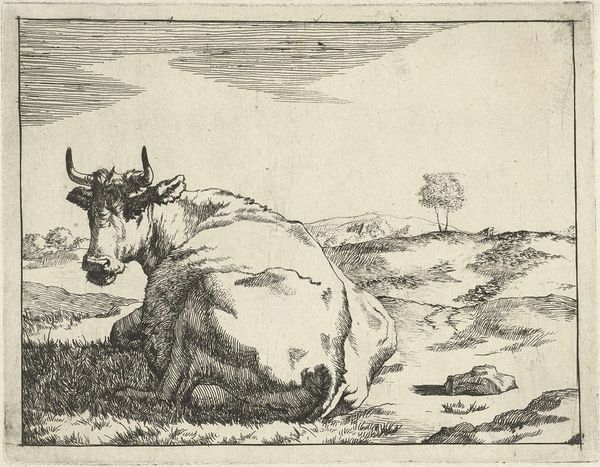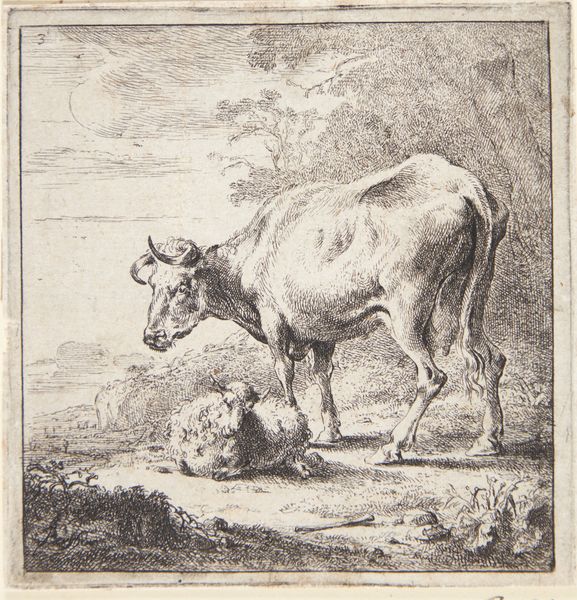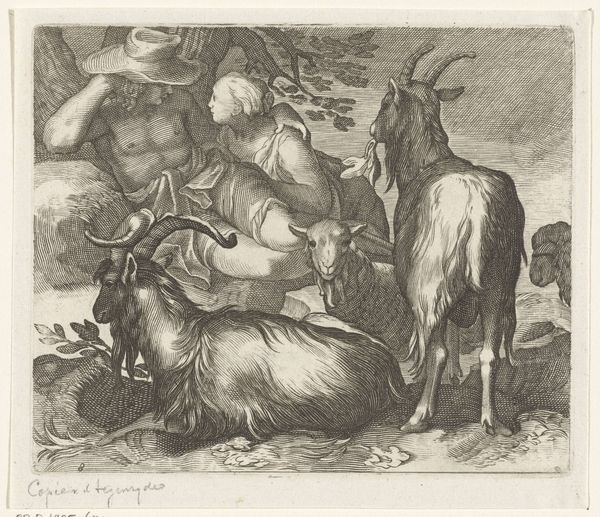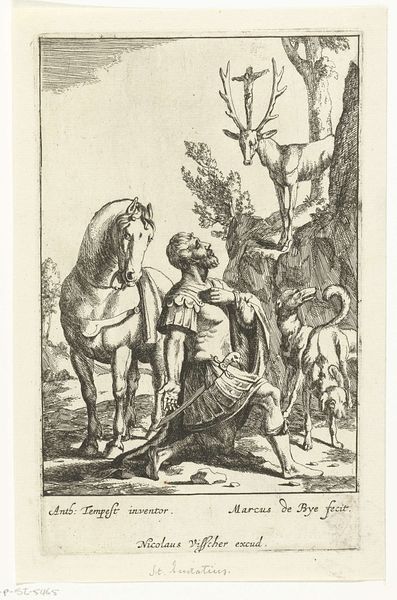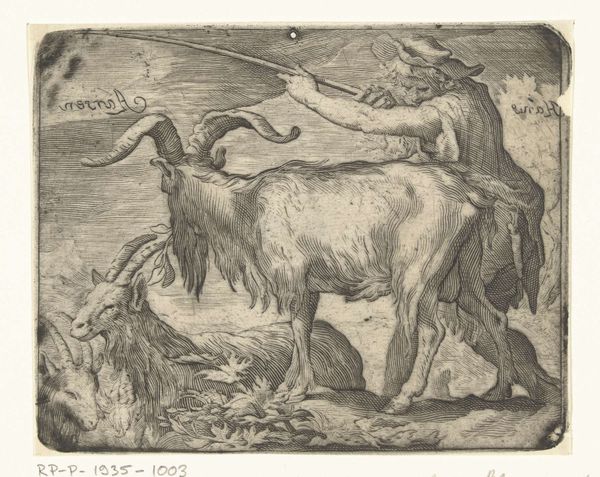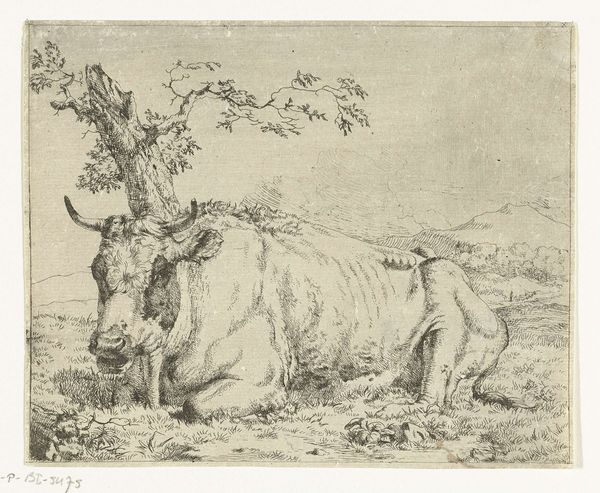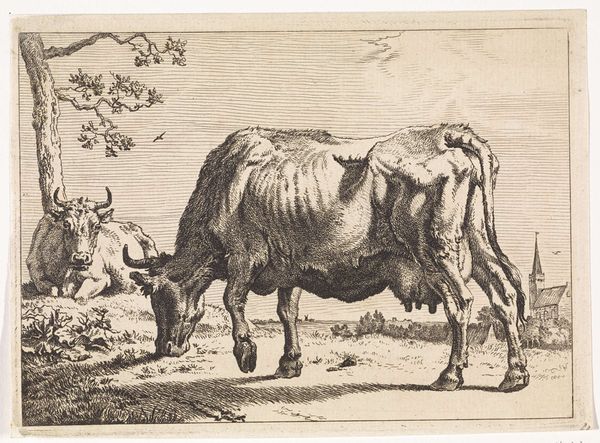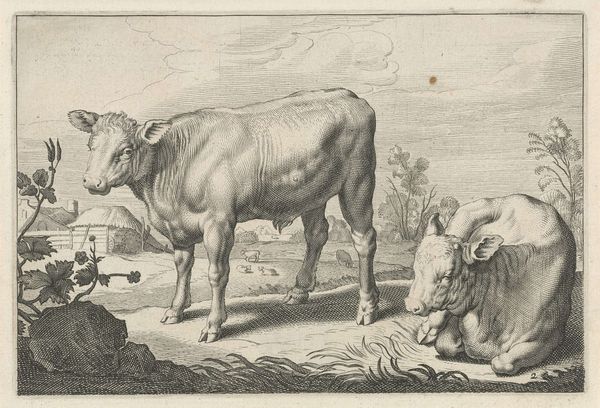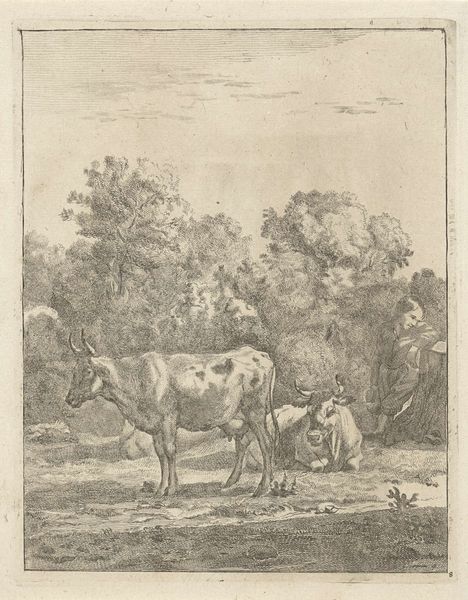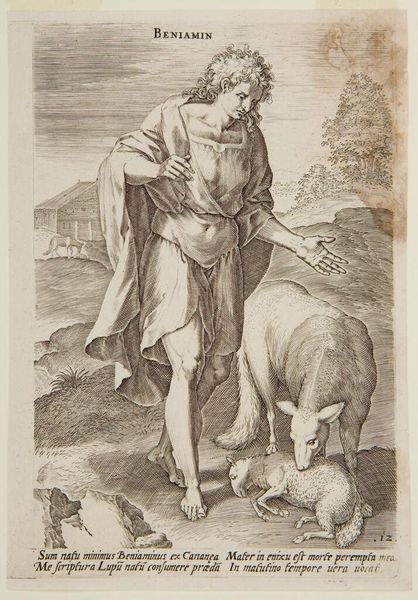
print, engraving
#
baroque
# print
#
landscape
#
figuration
#
line
#
history-painting
#
engraving
Dimensions: height 135 mm, width 85 mm
Copyright: Rijks Museum: Open Domain
Editor: Here we have Frederick Bloemaert’s engraving, “Heilige Sabbatius van Jericho,” created after 1636. I’m struck by how peaceful the scene is, even with the fine, almost scratchy lines of the engraving technique. What can you tell me about the symbolism at play here? Curator: Note how Sabbatius is accompanied by a donkey. Throughout history, the donkey has served as a complex symbol, embodying both humility and foolishness. How might that tension play out in our understanding of Sabbatius and his story? Editor: Interesting. So the donkey could represent Sabbatius’s own perceived lowliness, but also perhaps the challenges and even ridicule he faced? Curator: Precisely. Consider, too, the landscape. The landscape traditionally signified both the earthly realm and a site of spiritual contemplation. The integration of figure and landscape, coupled with the animal symbolism, is something that the baroque period developed to a greater degree than earlier movements. The image becomes a testament to a life lived in simple devotion amidst the complexities of the world. Do you see any other cultural references in this image? Editor: I suppose his attire also points to a life of simplicity, maybe even poverty? Curator: Indeed. And that poverty becomes its own symbol. This is how we use these images to anchor our memories to his history. It’s a constructed representation, to be sure, but the choice of imagery is still powerful and poignant. Editor: That's fascinating, it changes how I see this artwork! Curator: Me too.
Comments
No comments
Be the first to comment and join the conversation on the ultimate creative platform.

